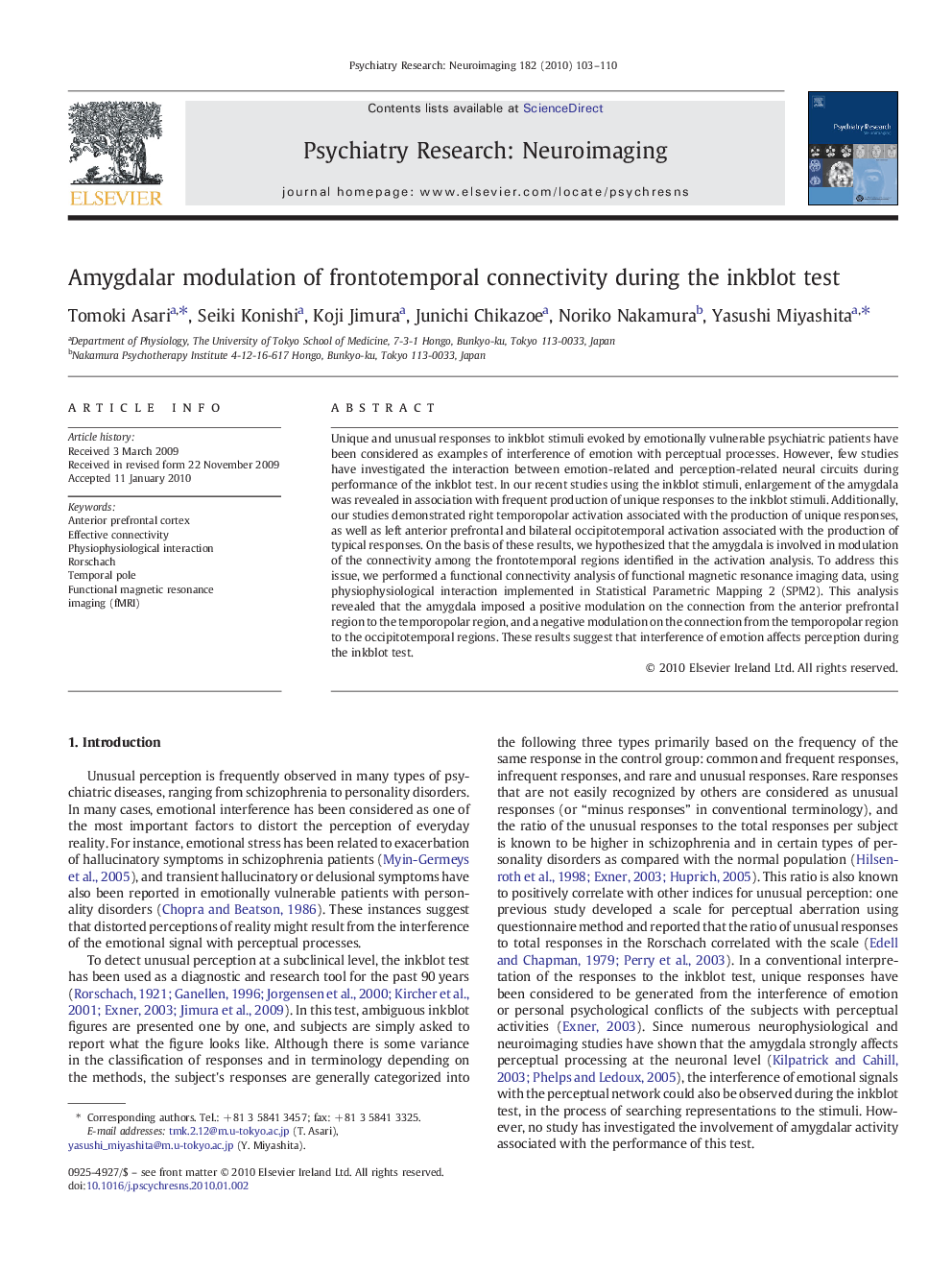| Article ID | Journal | Published Year | Pages | File Type |
|---|---|---|---|---|
| 335813 | Psychiatry Research: Neuroimaging | 2010 | 8 Pages |
Unique and unusual responses to inkblot stimuli evoked by emotionally vulnerable psychiatric patients have been considered as examples of interference of emotion with perceptual processes. However, few studies have investigated the interaction between emotion-related and perception-related neural circuits during performance of the inkblot test. In our recent studies using the inkblot stimuli, enlargement of the amygdala was revealed in association with frequent production of unique responses to the inkblot stimuli. Additionally, our studies demonstrated right temporopolar activation associated with the production of unique responses, as well as left anterior prefrontal and bilateral occipitotemporal activation associated with the production of typical responses. On the basis of these results, we hypothesized that the amygdala is involved in modulation of the connectivity among the frontotemporal regions identified in the activation analysis. To address this issue, we performed a functional connectivity analysis of functional magnetic resonance imaging data, using physiophysiological interaction implemented in Statistical Parametric Mapping 2 (SPM2). This analysis revealed that the amygdala imposed a positive modulation on the connection from the anterior prefrontal region to the temporopolar region, and a negative modulation on the connection from the temporopolar region to the occipitotemporal regions. These results suggest that interference of emotion affects perception during the inkblot test.
